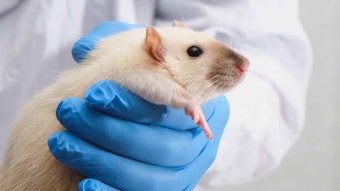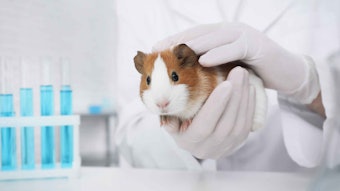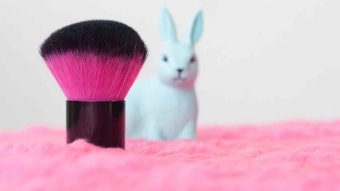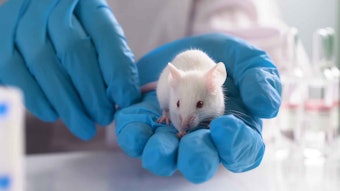A partnership between Hurel Corp. and L'Oréal has resulted in a chip that may replace skin allergy testing on animals. While the researchers report there is still work to do before the Allergy Test on a Chip is commercially available, they find that it could offer an alternative by late 2011 before the EU ban on animal testing is enforced in 2013.
The chip was designed to replace the local lymph node assay (LLNA), a test often performed on raw materials for cosmetics. In addition to saving animals, the chip is also said to be less expensive than animal testing.
The chip is said to show an allergic reaction similar to the allergic reaction seen in animals. The chip is comprised of an artificial lymph node of cultured cells next to an artificial skin construct made from cultured human cells. The artificial lymph node is connected to the skin with a microfluidic system made of channels filled with a specially maintained chemical gradient. To use the chip, the chemical product being tested would be put into contact with the artificial skin. In an allergic reaction, dendritic cells would migrate toward the artificial lymph node in response to the chemical gradient, where they would stimulate the T-cells
Similarly to when an animal experiences a skin allergy, dendritic cells from the skin migrate to the lymph node through lymphatic fluid. At the lymph node, the dendritic cells stimulate T-cells, thus creating an allergic reaction.
Hurel developed a working microfluidic portion of the chip, with the other portions of the chip remaining. Also, the research team still faces challenges before the chip is ready, such as determining how to measure the allergic response. To do so, it will monitor the response of the T-cells, which could involve monitoring T-cell proliferation, secreted molecules or both.
Further information on the design and use of this animal alternative will be published in Cosmetics & Toiletries magazine's March 2010 issue, "In Sight" interview.
-Katie Schaefer, C&T magazine









![A 2019 petition to the House of Commons stated, 'We, the undersigned residents of Canada, draw the attention of the House of Commons ... [that] animal testing is unnecessary to prove the safety of cosmetic products.'](https://img.cosmeticsandtoiletries.com/files/base/allured/all/image/2023/01/animal_testing_ban_canada_dreamstime_m_215632720.63d313232306d.png?auto=format%2Ccompress&fit=crop&h=191&q=70&rect=0%2C73%2C1800%2C1013&w=340)
